The Western North Pacific has continued cooling over the last millennium, with no reversal in trends after the Little Ice Age.
Earlier this year we highlighted a study showing corals thrive in multiple-degrees-warmer-than-today waters and their growth is stunted in cooler environments.
Corals in the Western North Pacific near Japan were far more abundant than today during the warmer last interglacial (as the below chart in Fifer et al., 2022 shows).
Coral presence has rapidly declined in tandem with global cooling over the last 1,000 years. When this region was yet 2°C warmer 5,000 to 6,000 years ago, corals were still “prolific” here.
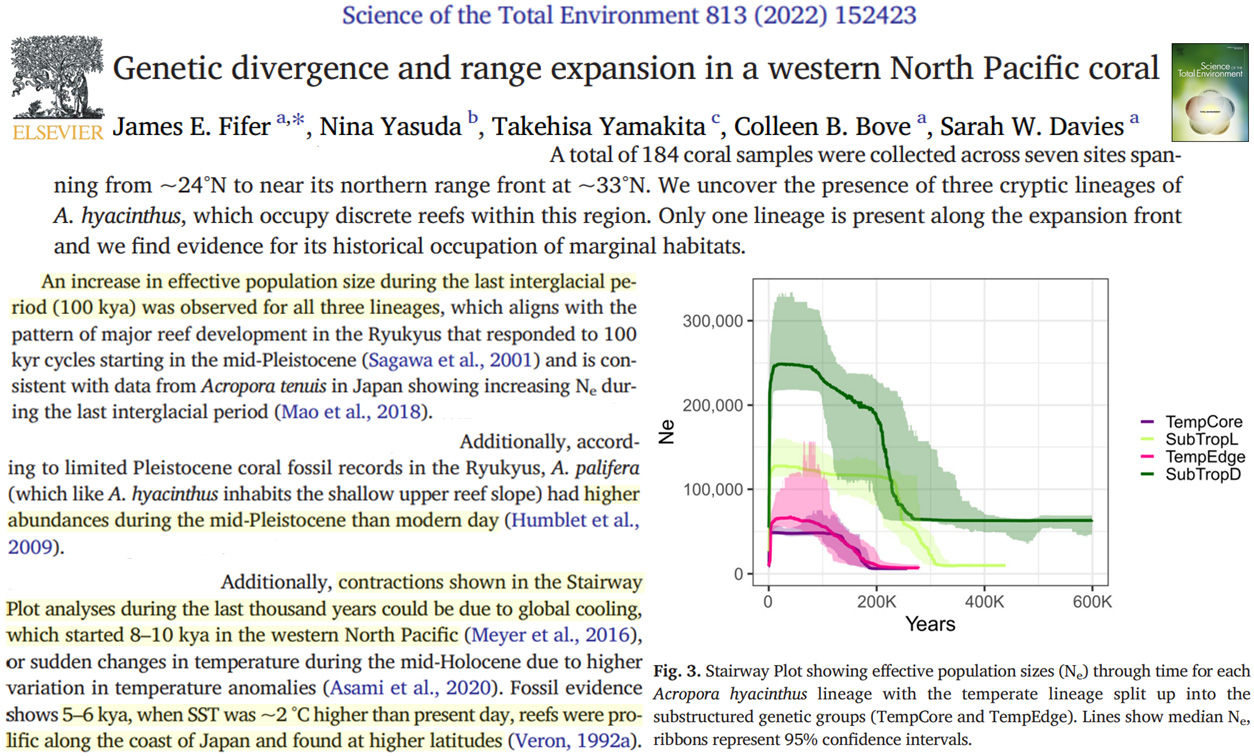
Image Source: Fifer et al., 2022
This Western North Pacific region was several degrees warmer than today throughout the last 10,000 years of the Holocene. The Okhotsk Sea was also as warm or warmer than today throughout the Late Pleistocene (~40,000 to 15,000 years ago), when CO2 levels varied around 200 ppm. During the last interglacial (~110-120,000 years ago) this region’s sea surface temperatures (SST) were approximately 5°C warmer than today (Max et al., 2020).
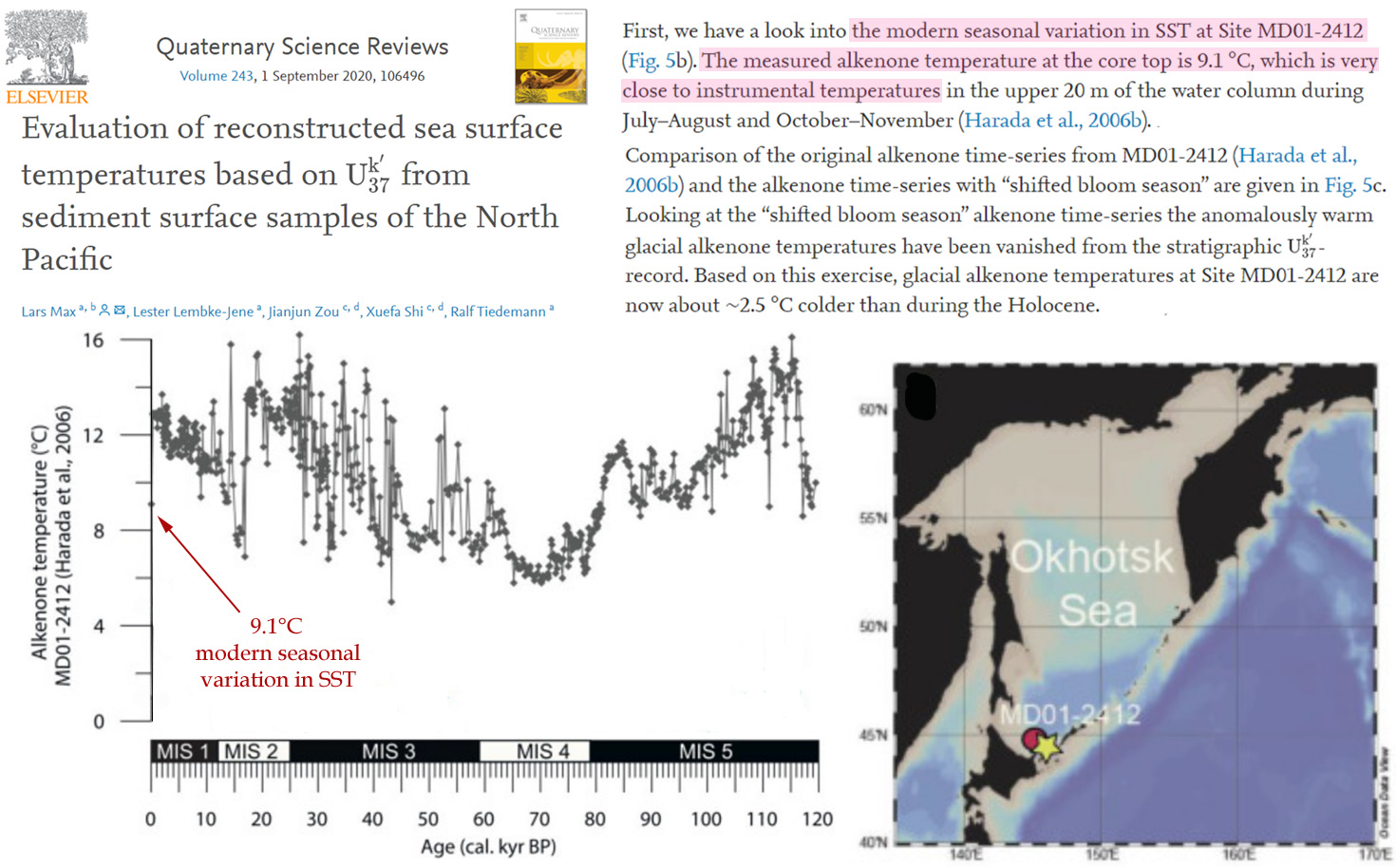
Image Source: Max et al., 2020
Another study (Davis et al., 2020) also indicates modern temperatures are among the coldest of the last 10,000 years in this region.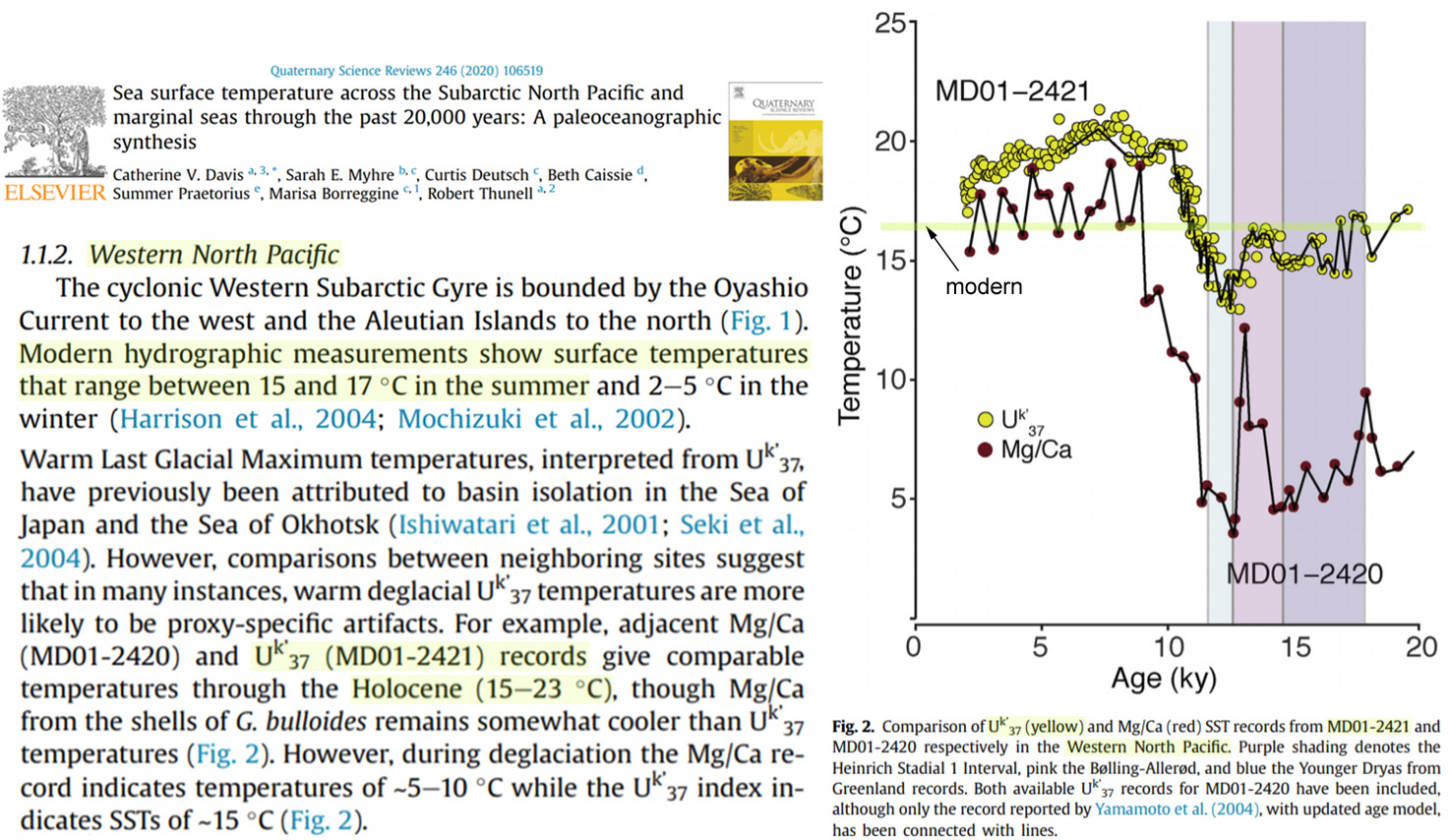
Image Source: Davis et al., 2020
The subarctic North Pacific’s Bering Sea had SSTs as warm as 12°C and thus it was sea ice free year round – including in winter – during the Early Holocene (Meheust et al., 2018). Today this same location is only sea ice free for about 3 months of the year due to the much colder modern temperatures.
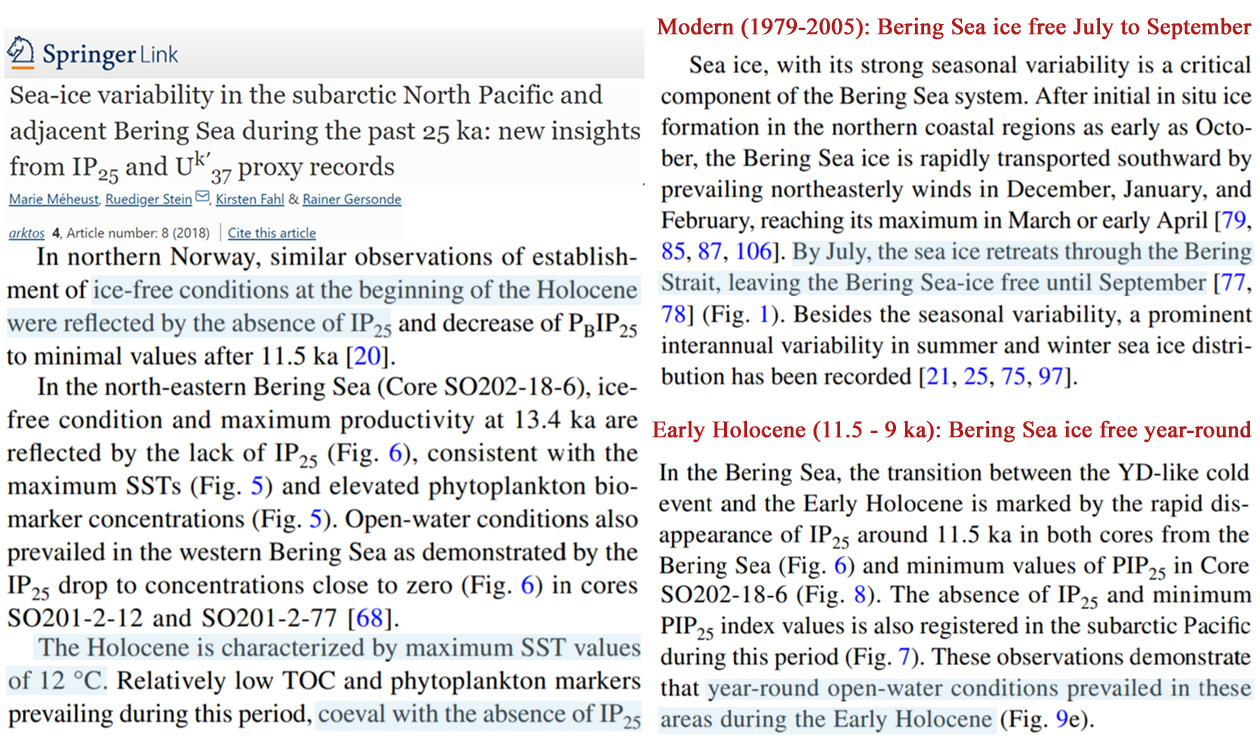
Image Source: Meheust et al., 2018
Sea surface temperatures in the “mid-latitude western Pacific region” have continued cooling since the onset of the Little Ice Age (He et al., 2019).
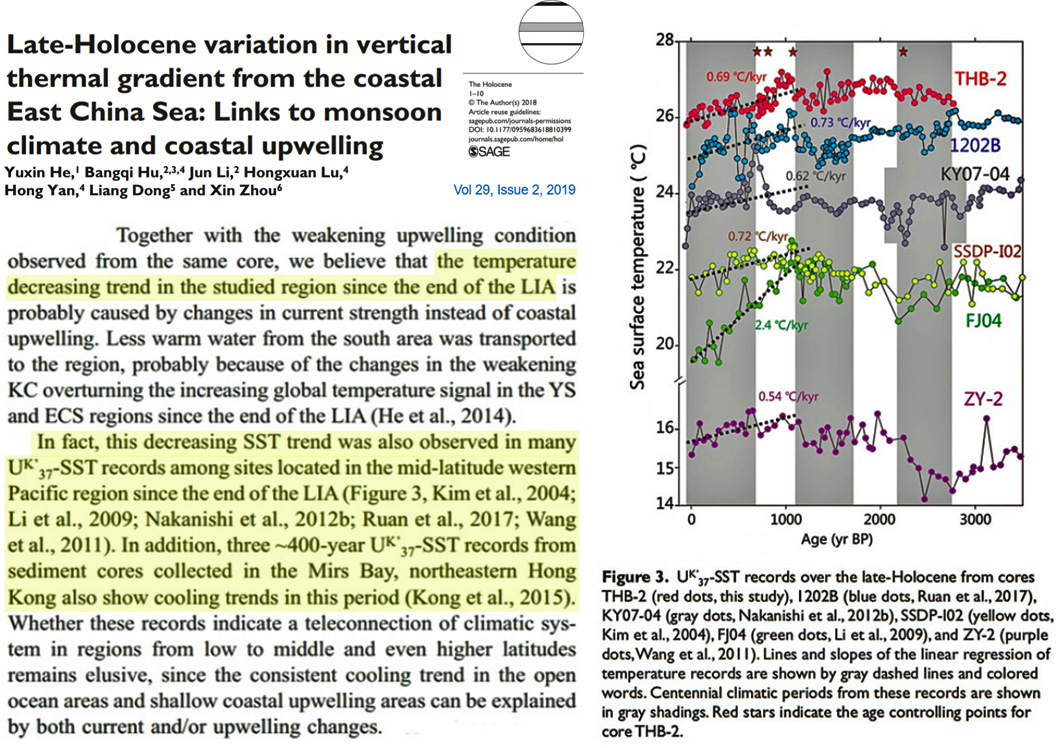
Image Source: He et al., 2019
And in the same region where coral presence has rapidly declined over the last 1,000 years there has been uninterrupted SST cooling since 1578 (Kawakubo and Yokoyama, 2017). In other words, there has been no modern trend reversal since the onset of the Little Ice Age.
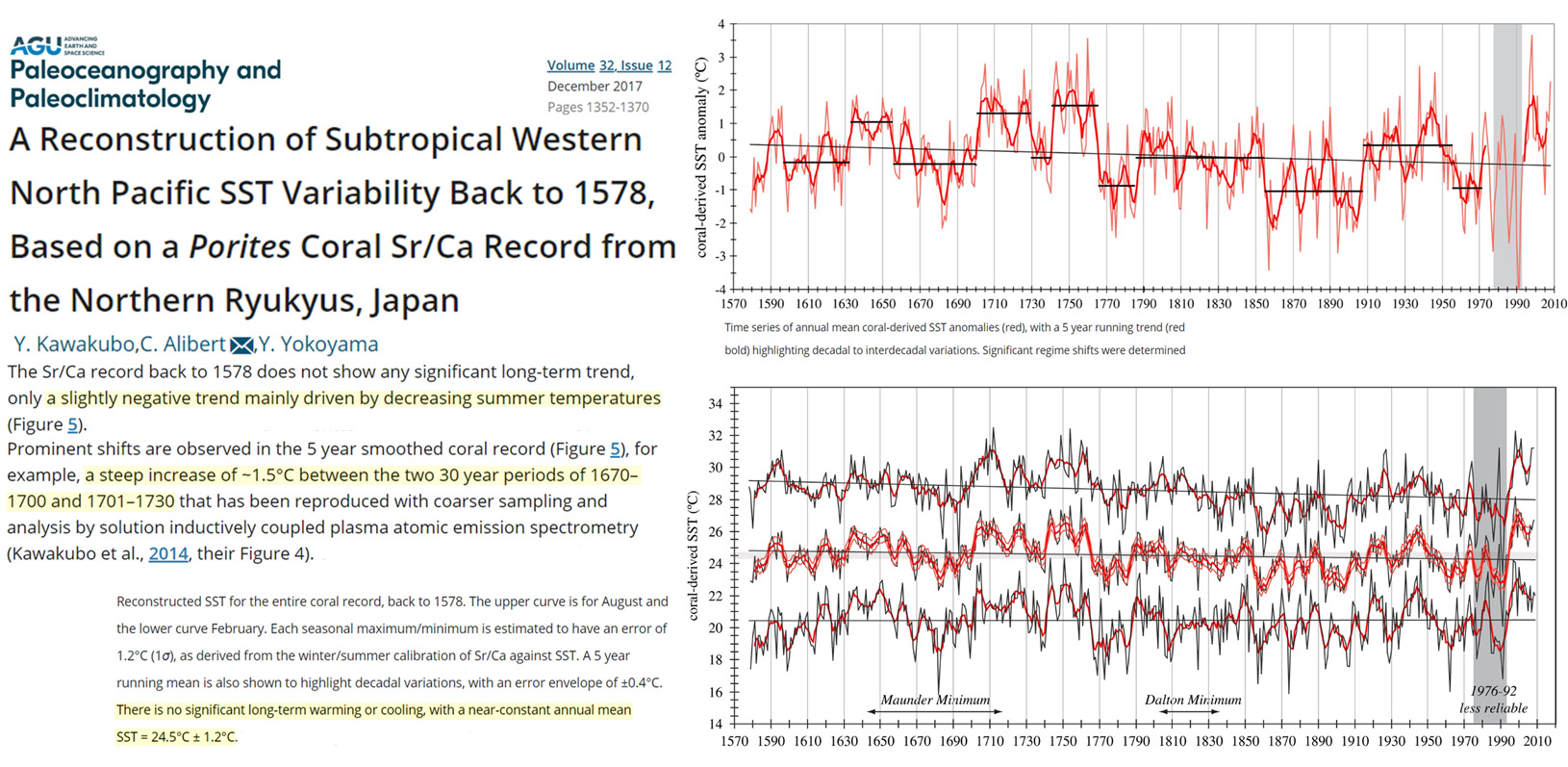
Image Source: Kawakubo and Yokoyama, 2017
via NoTricksZone
July 14, 2022 at 12:41PM
